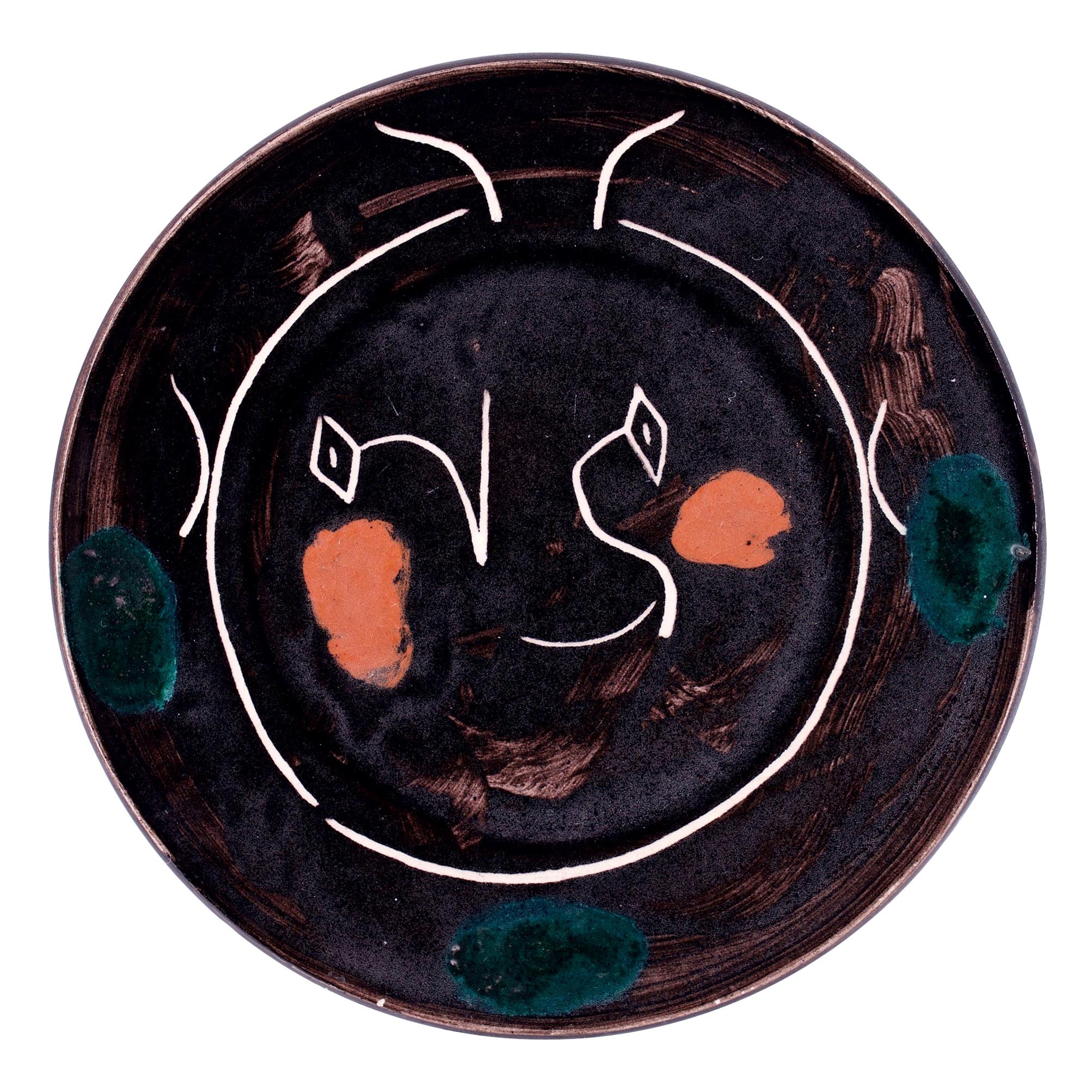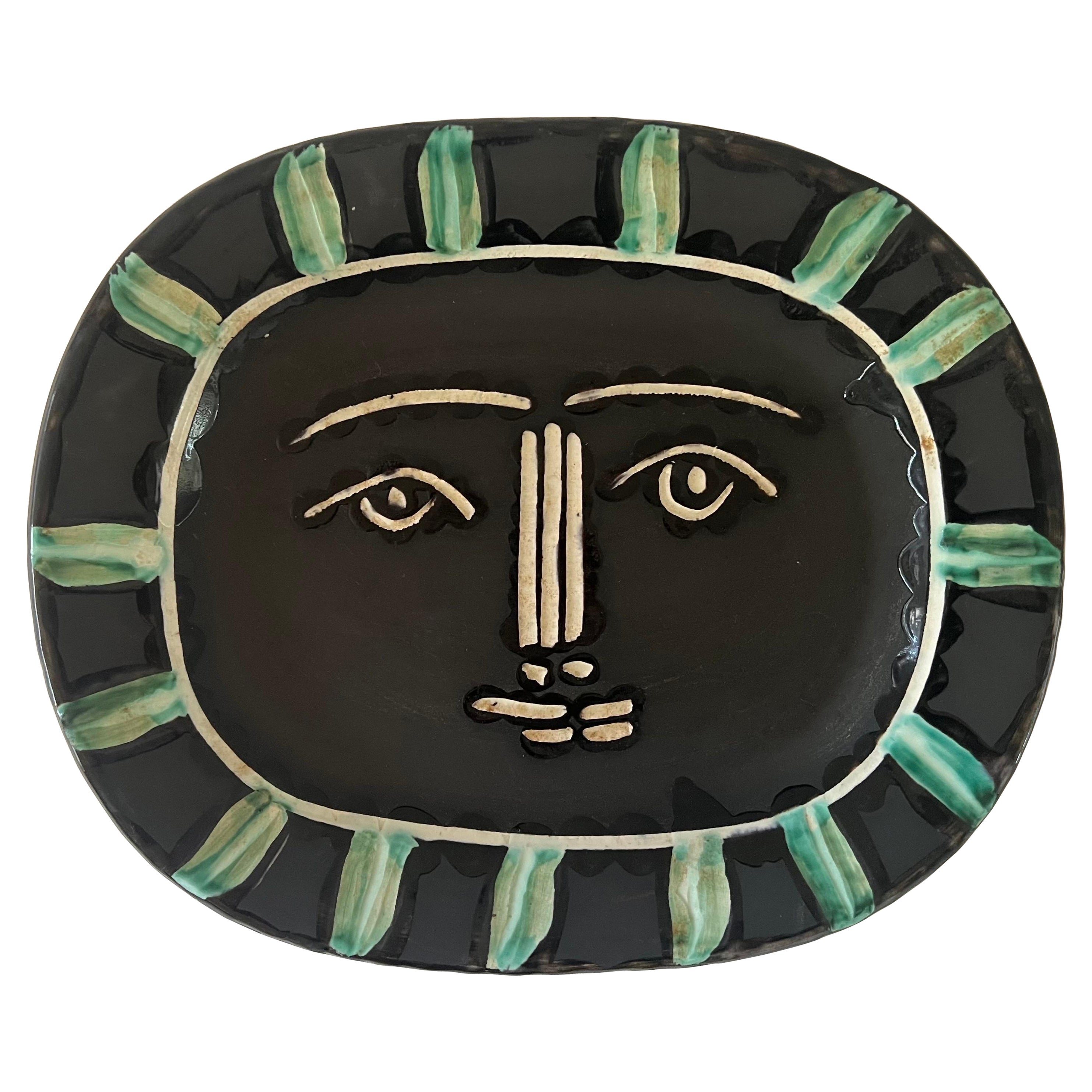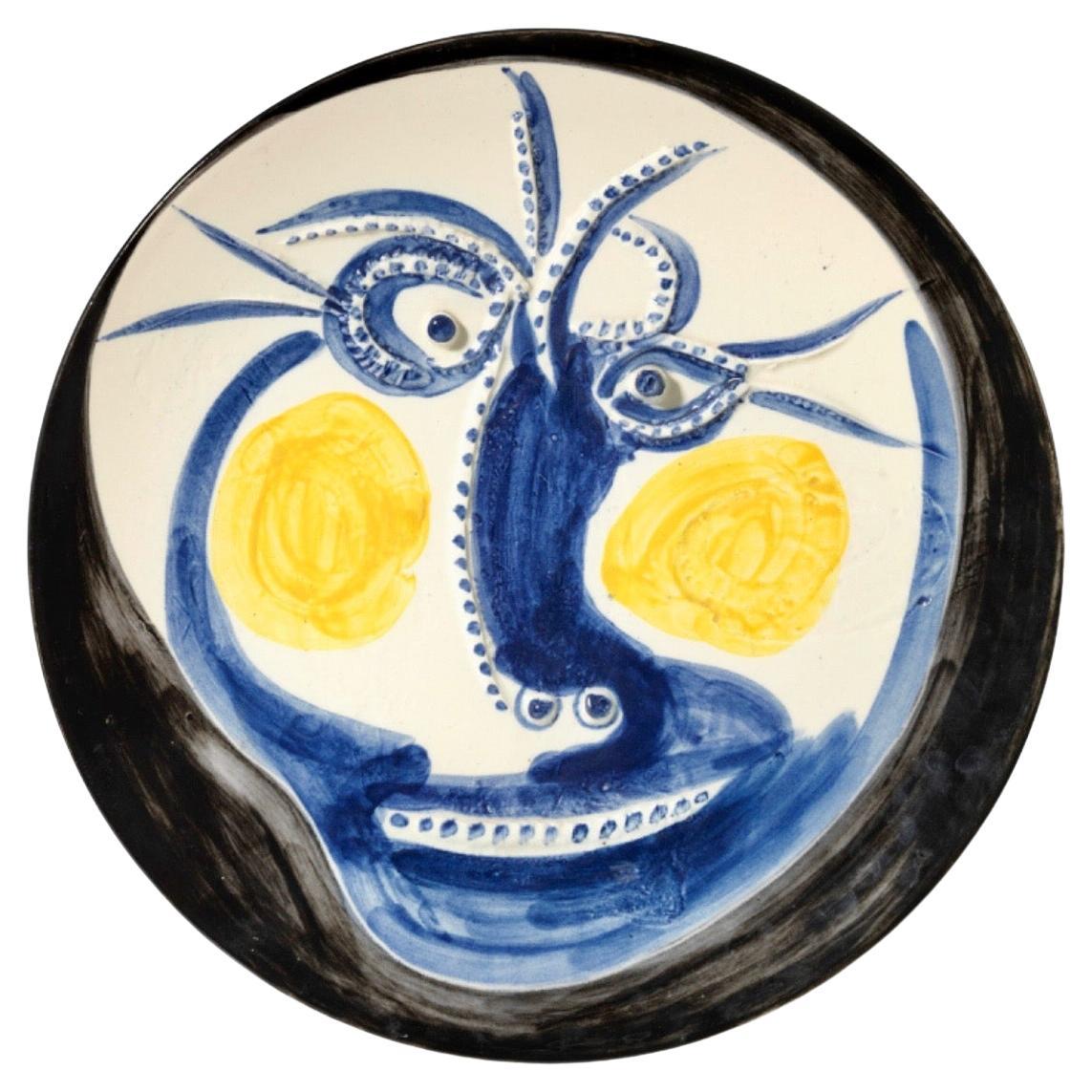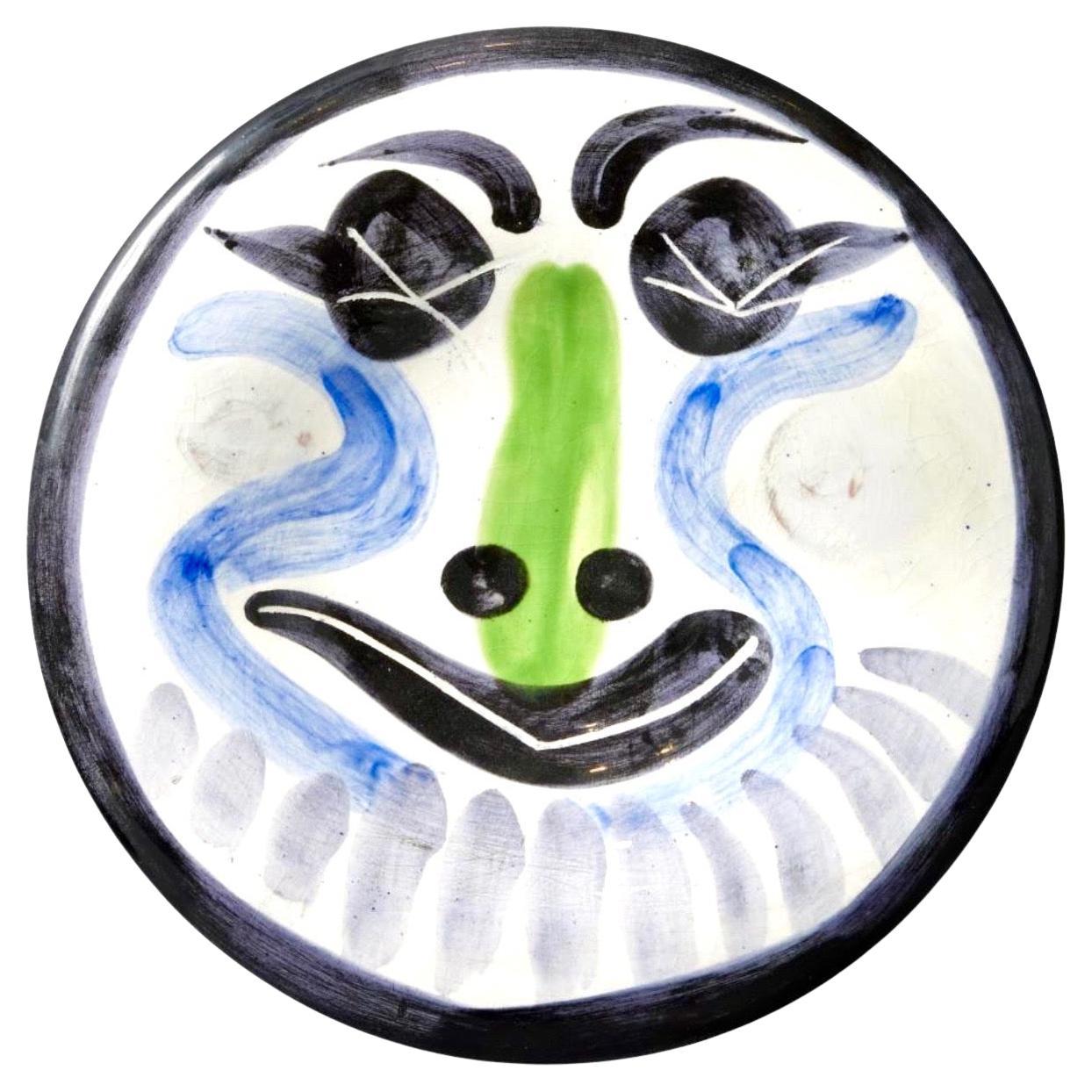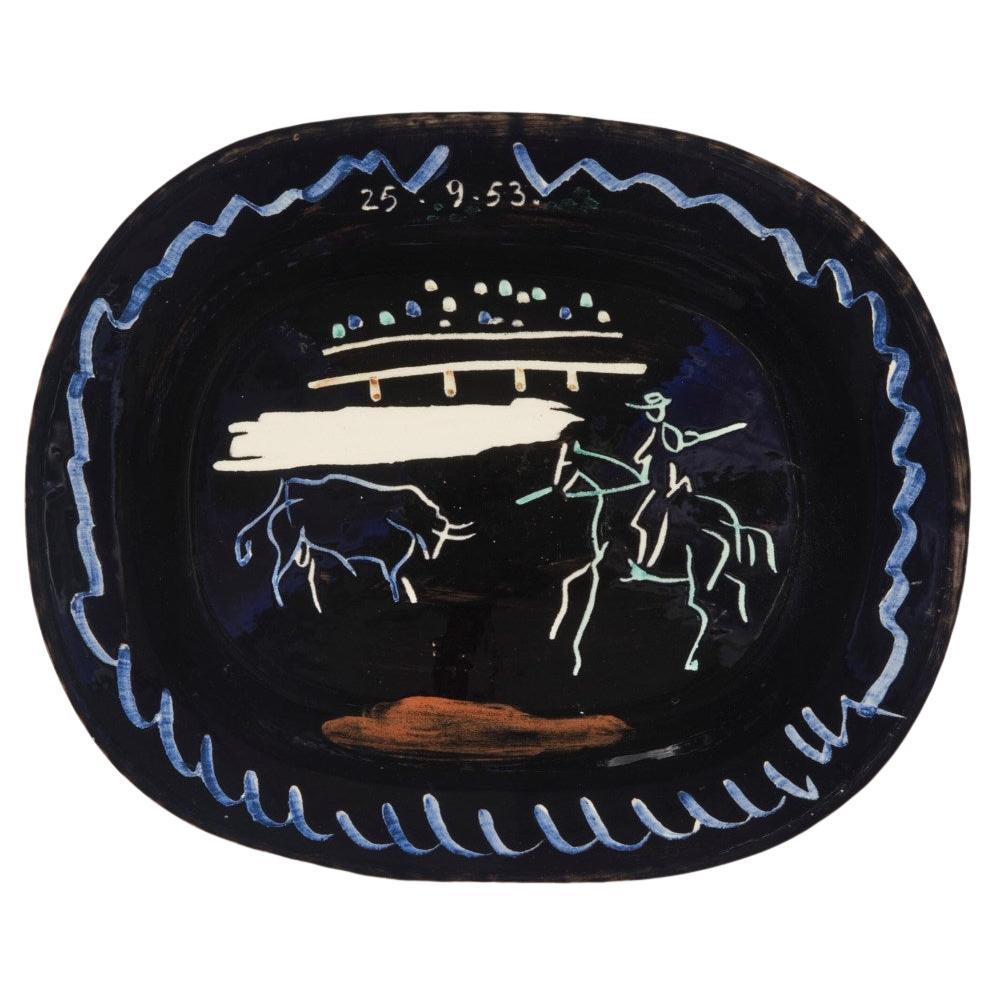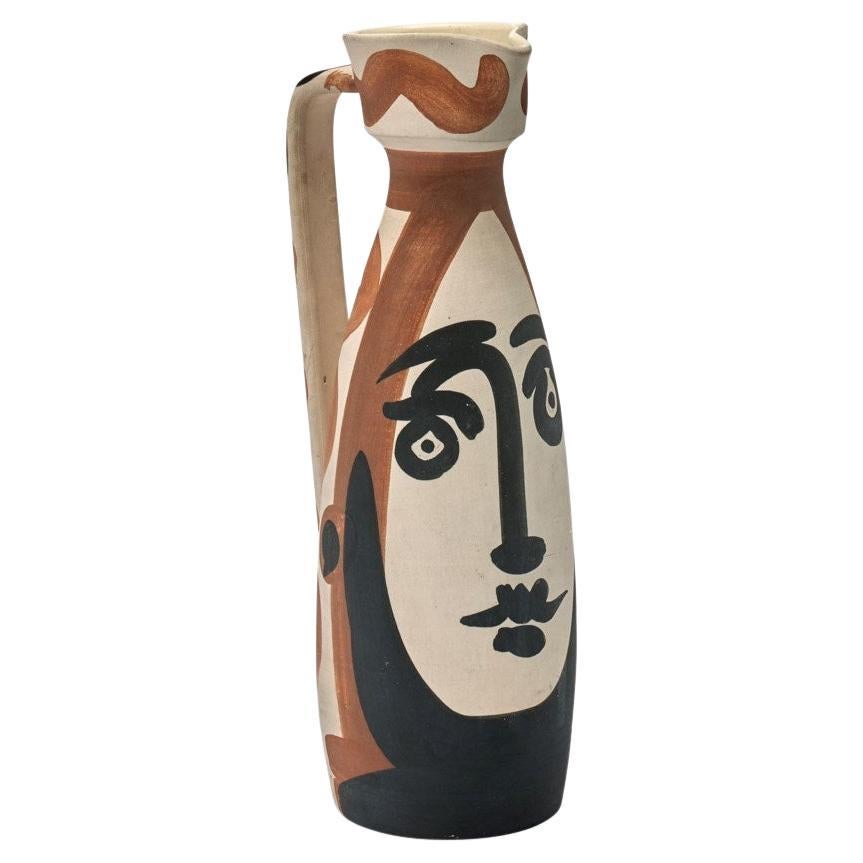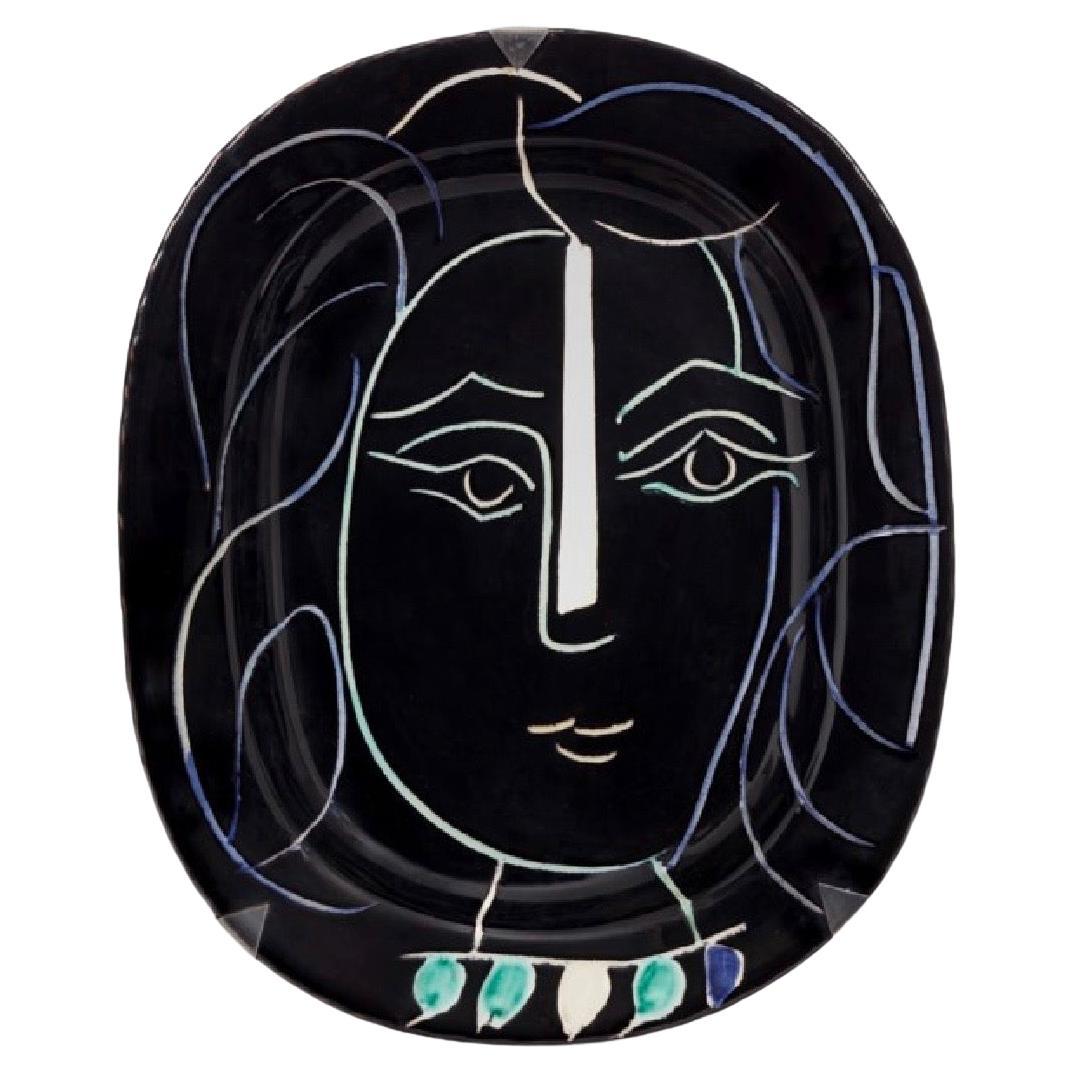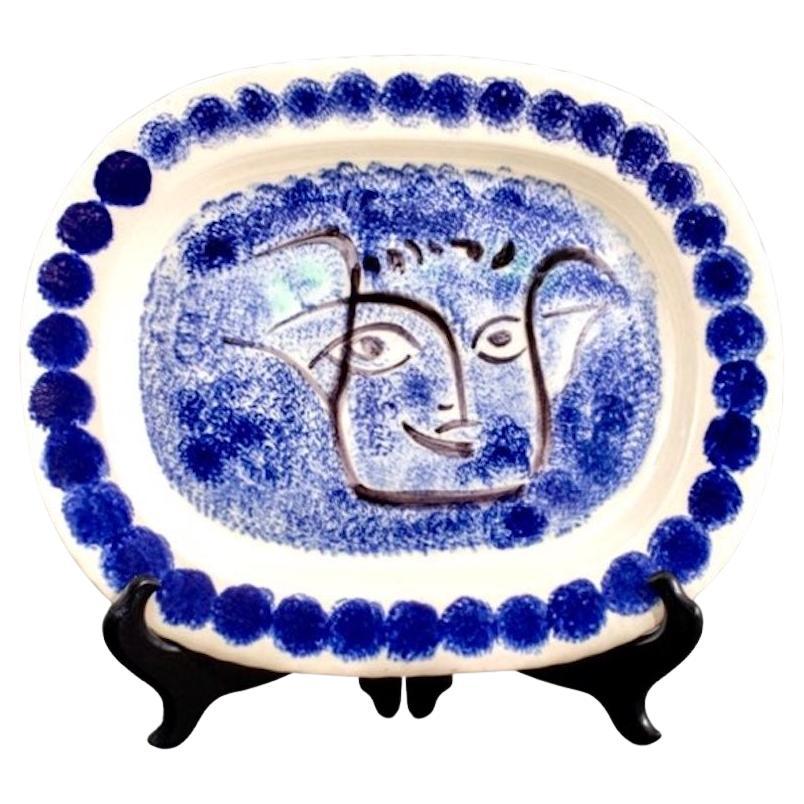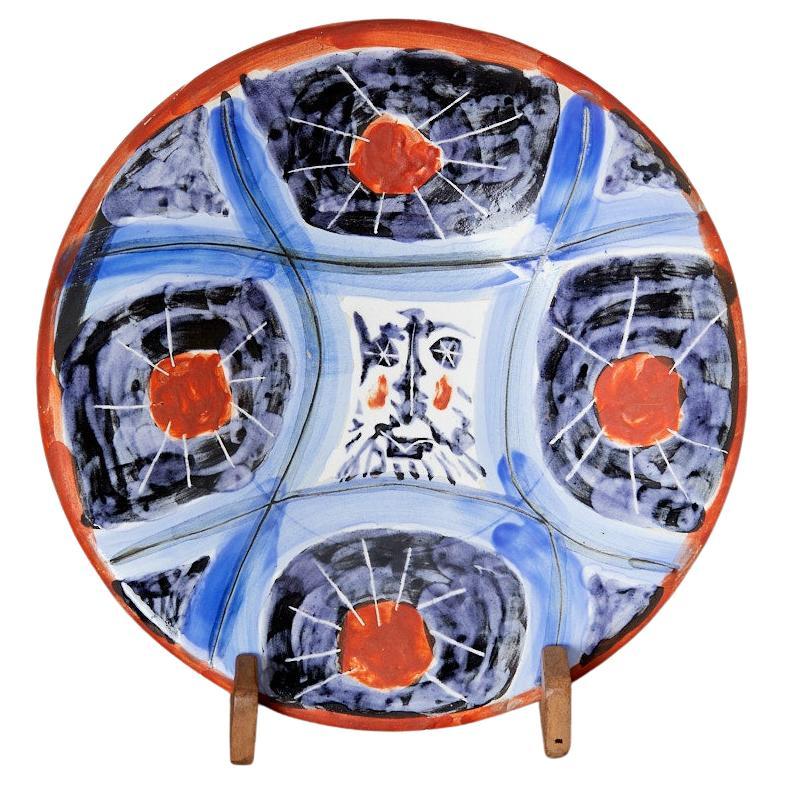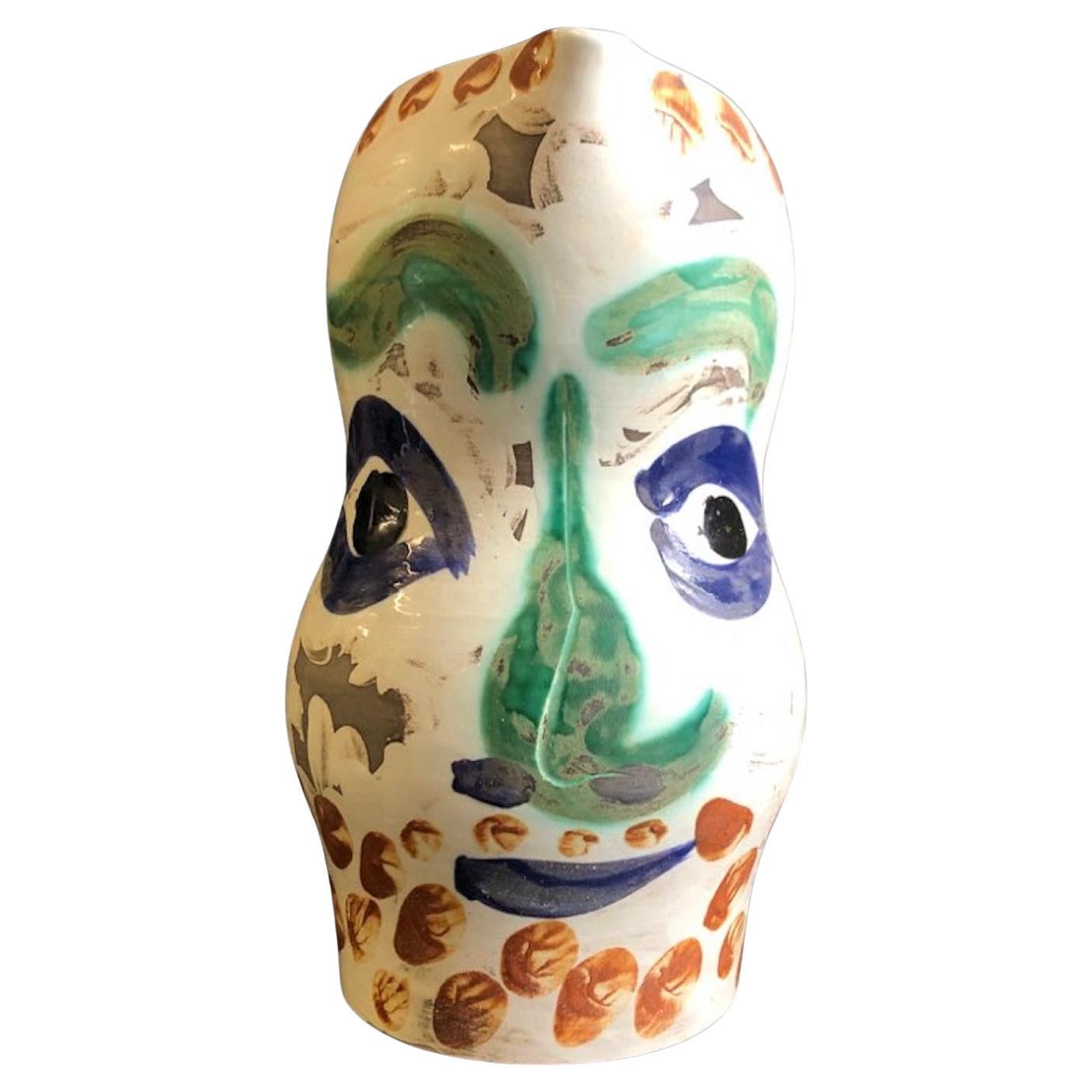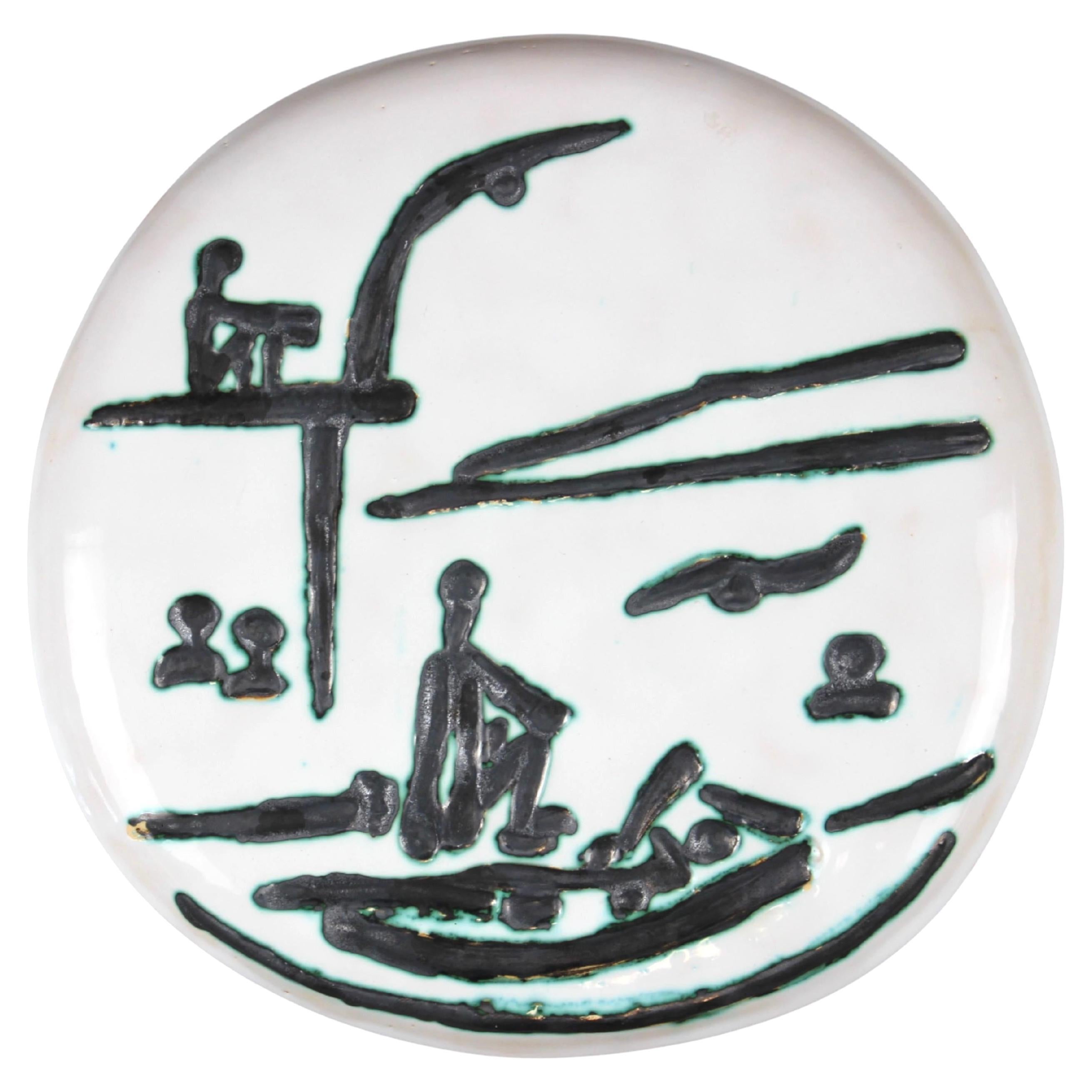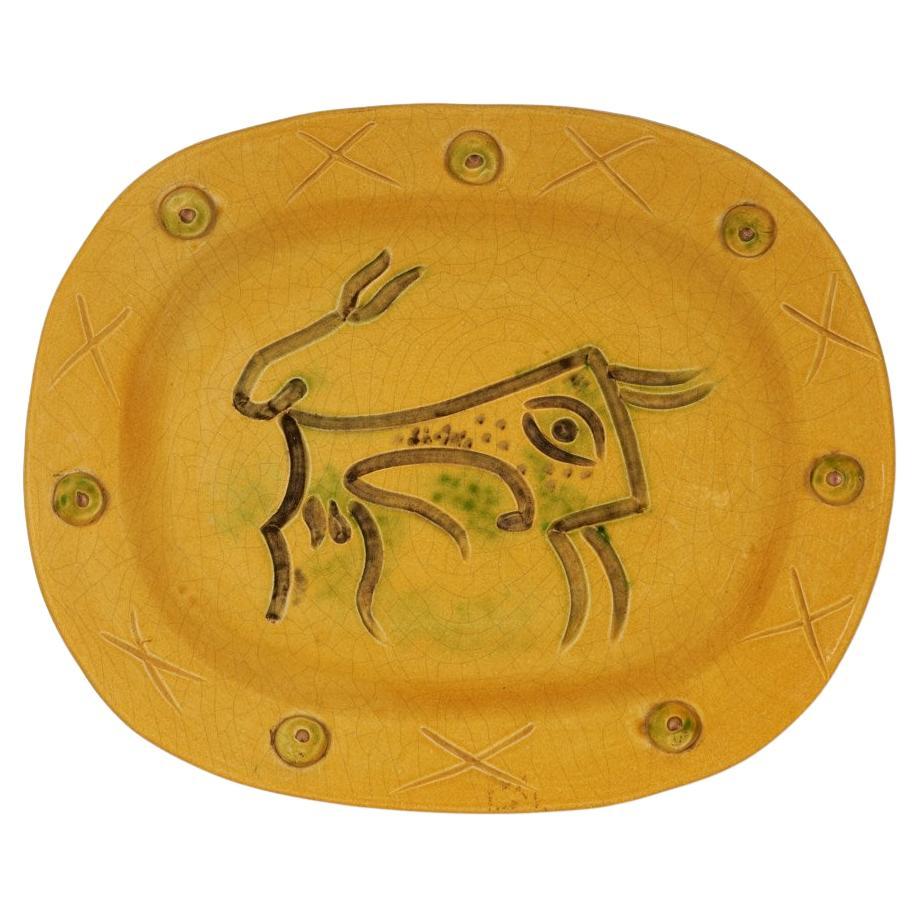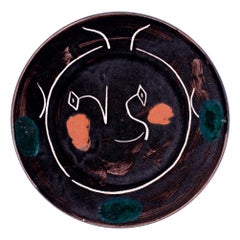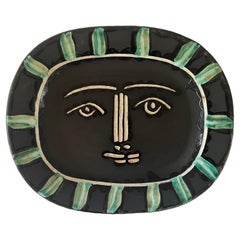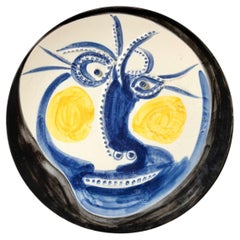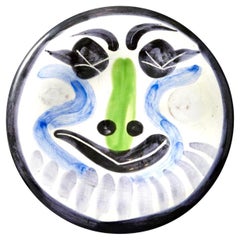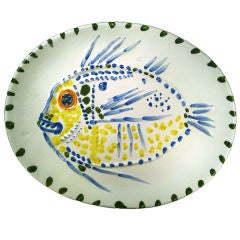
Pablo Picasso Visage 114 Madoura Plate Poisson fond blanc
View Similar Items
1 of 4
Pablo Picasso Visage 114 Madoura Plate Poisson fond blanc
About the Item
- Dimensions:Diameter: 13.5 in (34.29 cm)
- Place of Origin:
- Period:
- Date of Manufacture:1952
- Condition:Please contact dealer for a full condition report.
- Seller Location:New York, NY
- Reference Number:1stDibs: U101108896345
Authenticity Guarantee
In the unlikely event there’s an issue with an item’s authenticity, contact us within 1 year for a full refund. DetailsMoney-Back Guarantee
If your item is not as described, is damaged in transit, or does not arrive, contact us within 7 days for a full refund. Details24-Hour Cancellation
You have a 24-hour grace period in which to reconsider your purchase, with no questions asked.Vetted Professional Sellers
Our world-class sellers must adhere to strict standards for service and quality, maintaining the integrity of our listings.Price-Match Guarantee
If you find that a seller listed the same item for a lower price elsewhere, we’ll match it.Trusted Global Delivery
Our best-in-class carrier network provides specialized shipping options worldwide, including custom delivery.You May Also Like
1940s Pablo Picasso Abstract Face Black Plate B Visage Noir Devil Madoura Ramie
By Pablo Picasso
Located in Hyattsville, MD
Black face service plate, glazed white earthenware, painted in colors; white, orange, and deep greys. Made in 1948, from an edition of 100, inscribed 'EDITION PICASSO' and 'B', with ...
Category
Vintage 1940s French Mid-Century Modern Wall-mounted Sculptures
Materials
Stoneware
Ceramic Plate Visage Gris 'Grey Face' A.R. 206 by Pablo Picasso & Madoura, 1953
By Madoura, Pablo Picasso
Located in New York, NY
The engraved and brush painted ceramic plate, Visage Gris (Grey Face) is one the most iconic pieces created by Pablo Picasso (1881 - 1973) at the Madoura workshop in Vallauris, France. It is said "all portraits are self portraits". In this work, we see Picasso's wistfulness, vulnerability and humor set within a beautiful image representing both the sun and the moon, the masculine and the feminine. Picasso mastery of form, image, composition and subtle color is evident in a work that resonates transcendence.
Created in 1953, Pablo Picasso ceramic Visage Gris (Grey Face), 1953 A.R. 206 is a Madoura white earthenware clay, knife engraved under partial brushed glaze with decoration in engobes (green, black, white) from the edition of 500. This work is stamped with the 'Madoura PLEIN FEU' and ‘EMPREINTE ORIGINALE DE PICASSO’ pottery stamps on the reverse. Dimensions: 12 3/8 x 15 1/8 x 1 5/8in (31.4 x 38.3 x 4.1cm). Madoura was an artisan workshop created by Georges and Suzanne Ramie which collaborated with Picasso in the fabrication and hand painting of the works.
Pablo Picasso designed 633 different ceramic editions between 1947 and 1971 at the Madoura workshop, with a number of variants and unique pieces resulting from these initial works. He began by creating simple, utilitarian objects such as plates and bowls, but later produced more complex forms, including pitchers and vases — their handles occasionally shaped to form facial features, or anatomical parts of his animal subjects.
Picasso remains one of the highest-grossing artists at auction today, and the range of his ceramics means it's possible to find both a good investment and a beautiful object. Visage Gris is among the most important.
A Short Biography follows:
Pablo Picasso revolutionized the art world and to many is THE artist of the 20th century. He is famous for his role in pioneering Cubism with Georges Braque and for his melancholy Blue Period pieces. Original signed Picasso lithographs and prints are a sure investment. Madoura Picasso ceramics are highly collectible in their own right.
As one of the most influential Modern artists of the 20th century, Pablo Picasso is renowned as a legendary artistic master to this day. Born on October 25, 1881 in Malaga, Spain, Pablo Picasso was a child prodigy who was recognized as such by his art-teacher father, who ably led him along. The small Museo de Picasso in Barcelona is devoted primarily to his early works, which include strikingly realistic renderings of casts of ancient sculpture.
Picasso was a rebel from the start and, as a teenager, began to frequent the Barcelona cafes where intellectuals gathered. He soon went to Paris, the capital of art, and soaked up the works of Edouard Manet, Gustave Courbet, and Henri de Toulouse-Lautrec, whose sketchy style impressed him greatly. Then it was back to Spain, a return to France, and again back to Spain – all in the years 1899 to 1904.
Before he struck upon Cubism, Picasso went through a prodigious number of styles – realism, caricature, the Blue Period, and the Rose Period. These distinguished styles are apparent in the unique original works as well as Picasso ceramics, lithographs, linocuts, and etchings that he created later in his life.
The Blue Period dates from 1901 to 1904 and is characterized by a predominantly blue palette and focuses on outcasts, beggars, and prostitutes. This was when he also produced his first sculptures. The most poignant work of the style, La Vie (1903), currently located in Cleveland’s Museum of Art, was created in memory of his childhood friend, the Spanish poet Carlos Casagemas, who had committed suicide. The painting started as a self-portrait, but Picasso’s features became those of his lost friend. The composition is stilted, the space compressed, the gestures stiff, and the tones predominantly blue.
The Rose Period began around 1904 when Picasso’s palette brightened and is dominated by pinks and beiges, light blues, and roses. His subjects are saltimbanques (circus people), harlequins, and clowns, all of whom seem to be mute and strangely inactive. One of the premier works of this period is Family of Saltimbanques (1905), currently in Washington, D.C. at the National Gallery, which portrays a group of circus workers who appear alienated and incapable of communicating with each other, set in a one-dimensional space.
In 1905, Picasso went briefly to Holland, and on his return to Paris, his works took on a classical aura with large male and female figures seen frontally or in distinct profile, as in early Greek art. One of the best examples of this style is in the Albright-Knox Gallery in Buffalo, NY, La Toilette (1906). Several pieces in this new, classical style were purchased by Gertrude Stein (the art patron and writer) and her brother, Leo Stein.
With his groundbreaking 1907 painting Les Demoiselles d’Avignon...
Category
Mid-20th Century French Mid-Century Modern Figurative Sculptures
Materials
Earthenware
Visage (A.R.448) - Picasso Madoura Ceramic Face Plate
By Pablo Picasso
Located in New York, US
Picasso's Visage Ramie 448 (1957) is a remarkable ceramic that showcases his innovative fusion of painting and sculpture. This piece, created during his collaboration with the Madour...
Category
Vintage 1960s French Modern Ceramics
Materials
Ceramic
Price Upon Request
Visage (A.R.490) Picasso Madoura Ceramic Face Plate
By Pablo Picasso
Located in New York, US
Picasso's face ceramics, such as Visage AR 490, are fascinating for several reasons. They blend tradition with modernism: Picasso merged ancient ceramic techniques with his signature...
Category
Vintage 1960s French Modern Ceramics
Materials
Ceramic, Earthenware
Pablo Picasso Ceramic Plate 'Corrida Sur Fond Noir'
By Pablo Picasso
Located in Paris, FR
White earthenware ceramic plate, partially engraved, with colored engobe and glaze.
Dated '25.9.53.' (upper center); stamped 'Madoura Plein Feu / Edition Picasso' (underneath).
(A....
Category
Vintage 1950s Ceramics
Materials
Ceramic
Pablo Picasso Ceramic pitcher 'Visage'
By Pablo Picasso
Located in Paris, FR
White earthenware ceramic pitcher with colored engobe and glaze.
Stamped ‘Madoura Plein Feu/EditionPicasso’ (underneath).
(A.R. 288)
Category
Vintage 1950s Ceramics
Materials
Ceramic
Recently Viewed
View AllMore Ways To Browse
Large Brass Giraffe Statue
Large Brass Reindeer
Large Chalkboard
Large Italian Spaghetti Dog
Large Jacobean Oak Gateleg Table
Large Japanese Bronze Koi Fish Sculpture
Large Leaf Verdure Tapestry
Large Moroccan Leather Rectangular Pouf
Large Rattan Animal Sculpture
Large Timber Modern Elephant Design
Large Vintage Lucite Gem Ice Bucket
Large Wall Abacus
Large Wooden Wall Shelf With Hooks
Larkin Co Oak Dresser
Larkin Dresser
Larkin Library Table
Larkin Secretary Desk
Larkin Soap Desk
